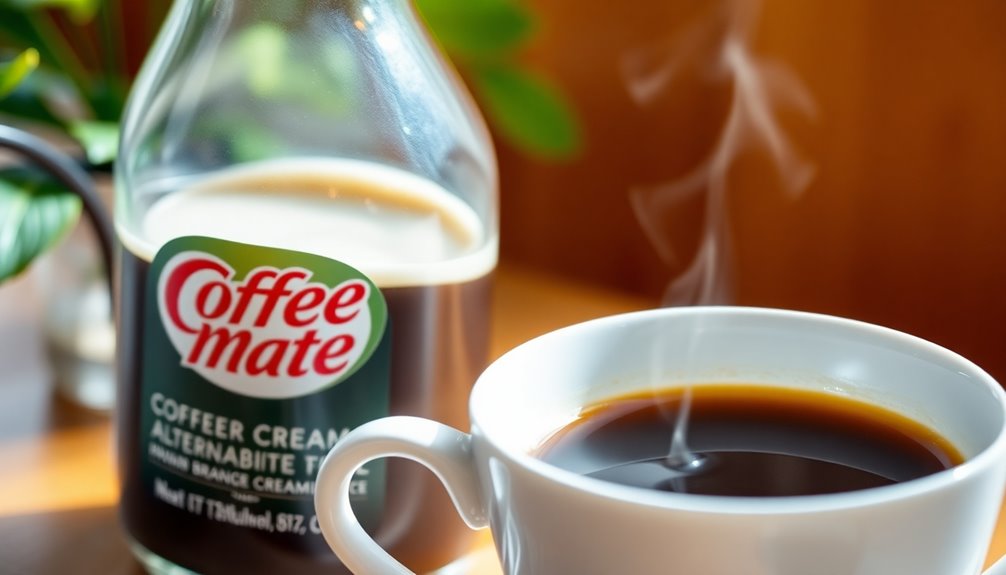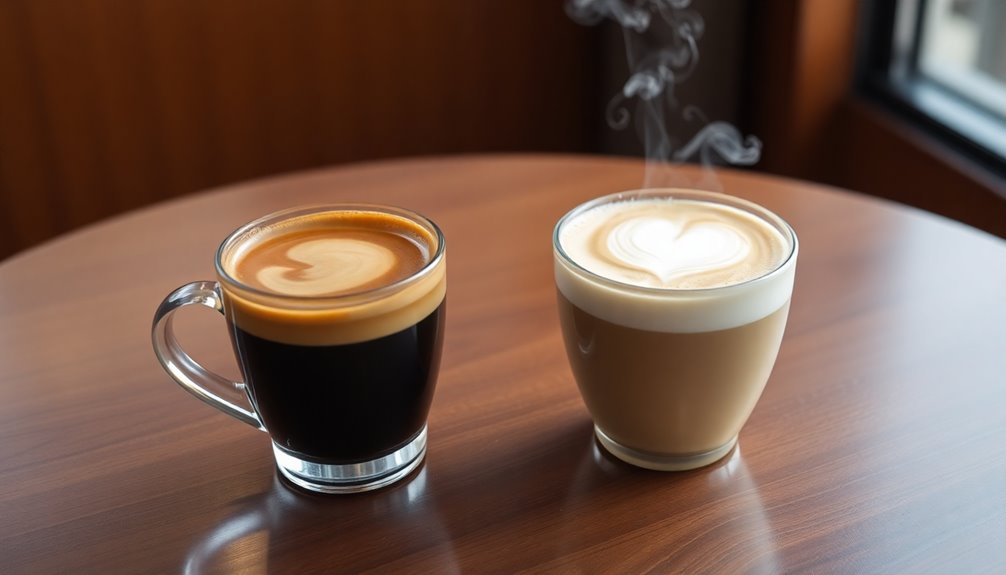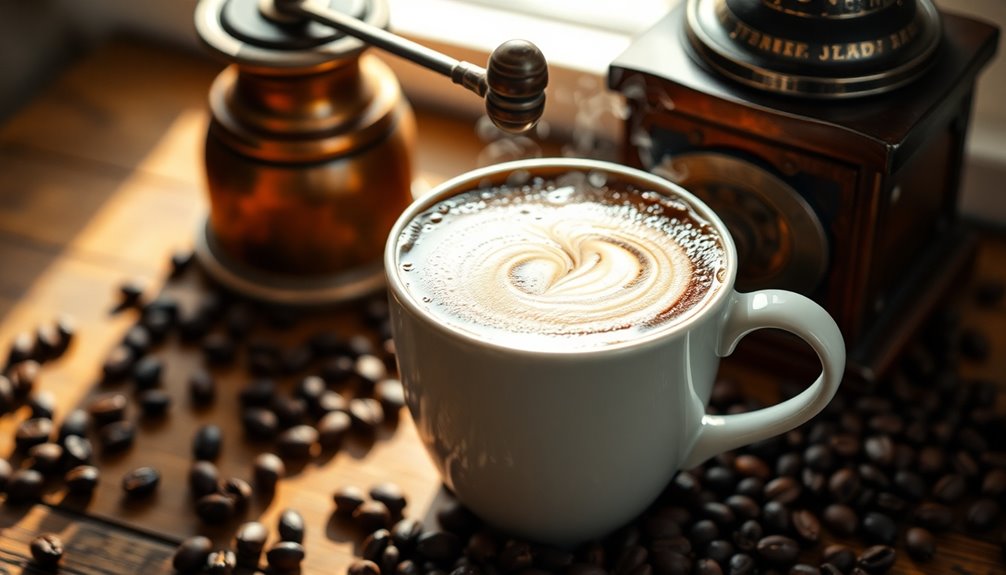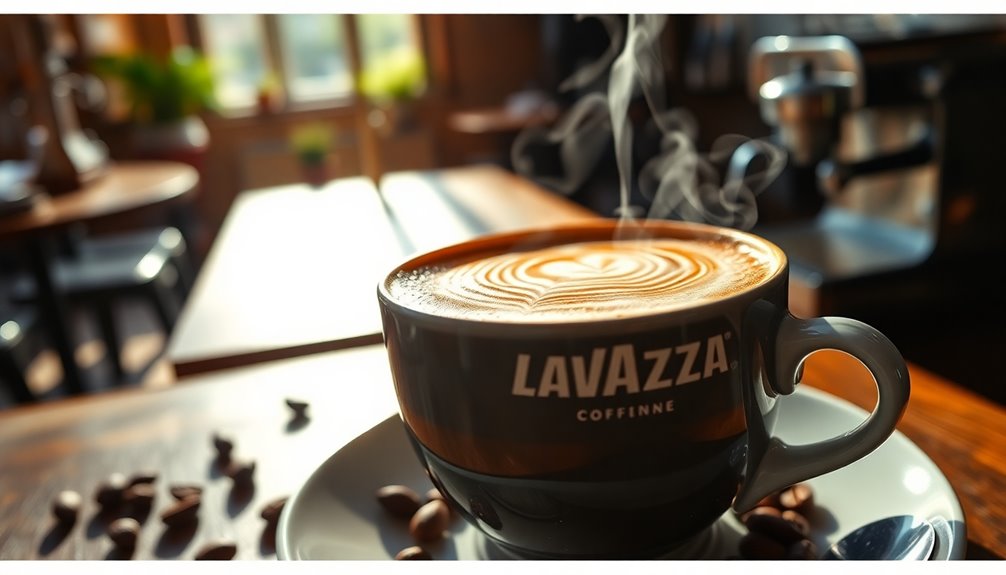A 10 oz cup of coffee usually packs between 125 to 200 mg of caffeine. This amount varies based on factors like the type of beans used and the brewing method. For instance, if you choose Robusta beans, you'll likely get a higher caffeine kick compared to Arabica. Plus, techniques like drip brewing versus French press can affect extraction, influencing your total caffeine content. It's essential to consider these elements to get the caffeine hit you want. If you're curious about how different brews and beans can affect your coffee experience, there's plenty more to explore!
Key Takeaways
- A standard 10 oz cup of coffee typically contains between 125 to 200 mg of caffeine, depending on various factors.
- The type of coffee bean significantly affects caffeine content; Arabica has ~118 mg while Robusta ranges from 200-240 mg per 10 oz.
- Brewing methods influence caffeine levels; espresso offers higher caffeine extraction compared to drip or steeping methods.
- Grind size impacts extraction; finer grinds can lead to higher caffeine levels, while coarser grinds yield milder coffee.
- Water temperature during brewing should be between 195°F to 205°F to optimize caffeine extraction without bitterness.
Understanding Caffeine Content
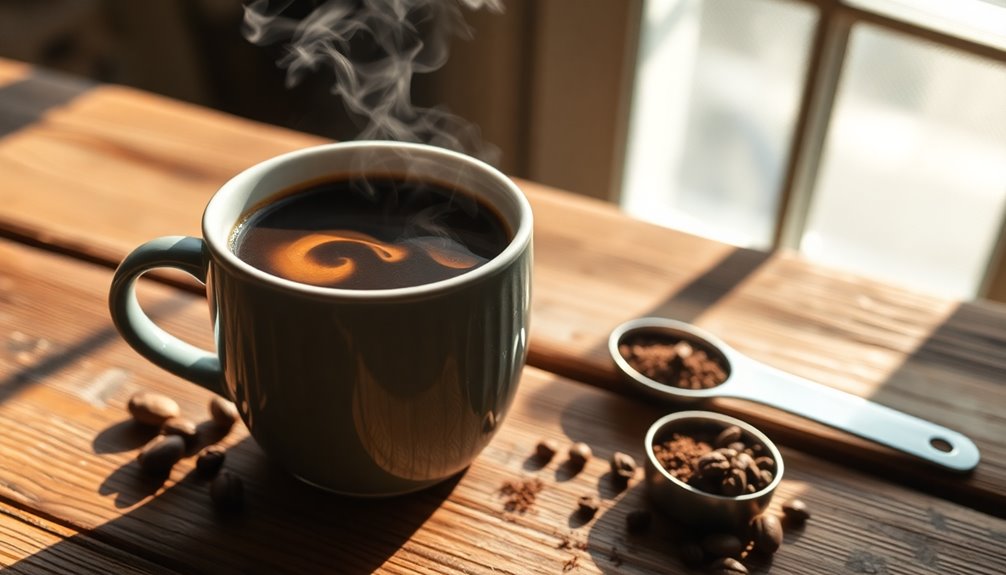
When it comes to understanding caffeine content, have you ever wondered how different factors influence the amount you get in a cup of coffee? The type of coffee beans you choose plays a significant role.
For instance, Arabica beans have about 1.2% caffeine, while Robusta beans contain nearly double that. This variation affects your experience—Arabica is smoother, but with less caffeine, whereas Robusta is often used for a stronger kick in instant coffee and espressos. Interestingly, the brewing method you select can also significantly impact the caffeine extraction, with espresso generally yielding more caffeine than other methods.
Serving size also matters; a standard 8-oz cup typically has around 95 mg of caffeine. If you opt for a 10-oz cup, you might get between 125 and 200 mg, depending on the beans and brewing method. It’s essential to consider not just the size of the cup, but also the type of coffee you choose, as some blends and roasts naturally have higher caffeine content. If you’re curious about how much caffeine is in coffee, remember that factors such as grind size and brewing time can also influence the final caffeine levels in your cup. Ultimately, understanding these variables can help you better manage your caffeine intake throughout the day.
Understanding these factors helps you make informed choices.
Brewing Methods Explained
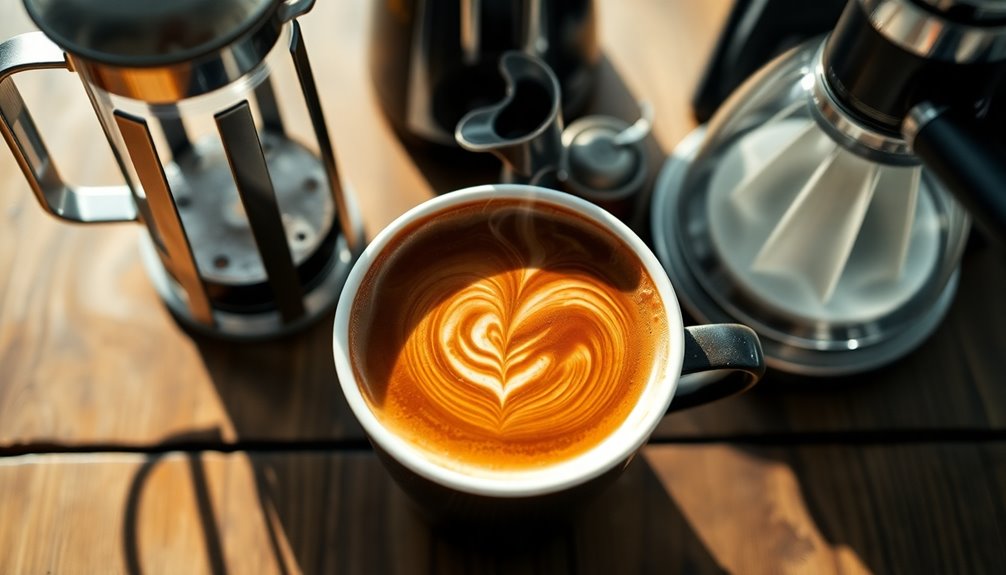
Understanding the various brewing methods can significantly enhance your coffee experience, as each technique extracts different flavors and aromas from the beans.
For instance, drip filtration, common in homes, uses hot water over ground coffee through a paper filter, resulting in a cleaner brew. This method is popular because it is easy to use and produces consistent results.
If you prefer a hands-on approach, steeping methods like the French press or Aeropress allow for rich, full-bodied coffee through constant contact with water.
Pressurized infusion, used in espresso, creates a concentrated cup by forcing hot water through finely packed grounds.
Other methods, like vacuum filtration or cold brew, offer unique tastes and textures.
Each method caters to different preferences, so experiment to find your favorite!
Impact of Bean Type
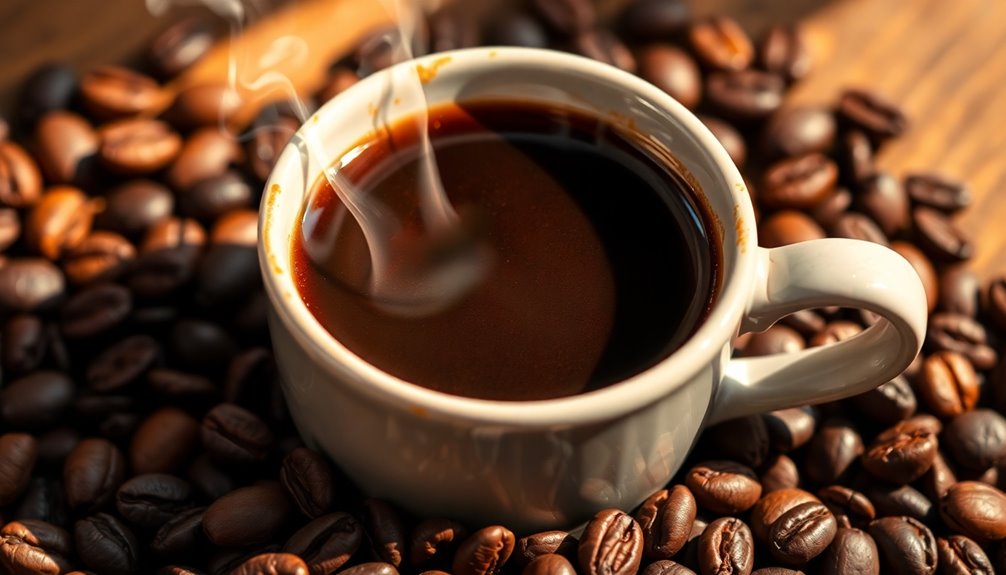
The choice of coffee bean type plays a significant role in determining the caffeine content of your brew.
If you opt for Arabica beans, you'll typically find around 118mg of caffeine in a 10 oz cup, thanks to their lower caffeine content of 34.1–38.5 grams per kilogram.
In contrast, Robusta beans pack a punch with approximately 200-240mg of caffeine per 10 oz cup, as they contain 68.6–81.6 grams per kilogram. This means Robusta beans offer about 50% more caffeine than Arabica.
The type of bean not only influences caffeine levels but also affects flavor, with Robusta often tasting stronger and more bitter. Additionally, brewing method can also significantly impact the overall caffeine extraction in your coffee.
Importance of Grind Size
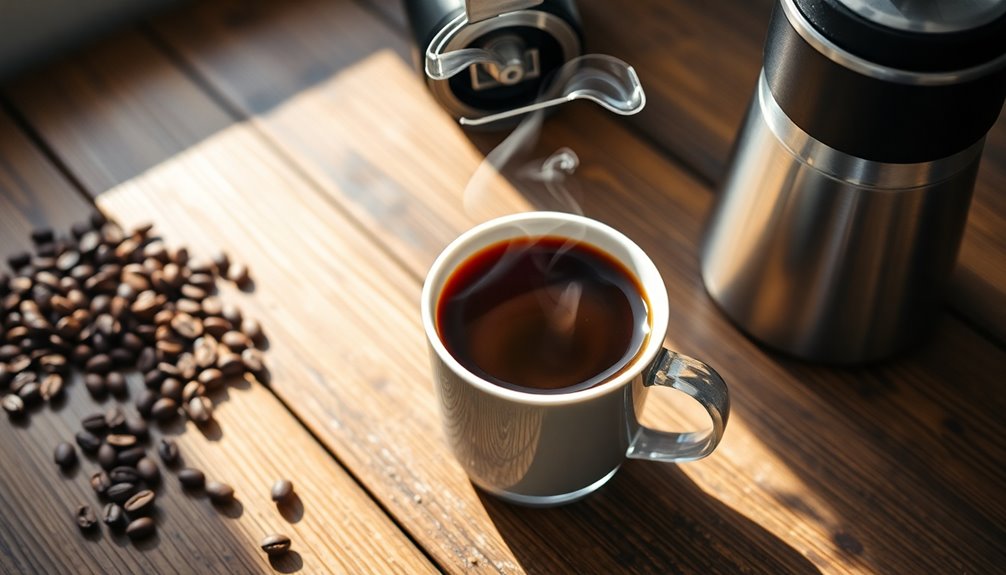
Grind size plays a crucial role in brewing the perfect cup of coffee. The size of your grind increases the surface area, allowing for better extraction of flavors and aromas. If you use a finer grind, you'll enhance the contact time between water and coffee, leading to a bolder flavor. Conversely, coarser grinds reduce contact time, yielding a milder taste. Getting the grind size wrong can result in over- or under-extraction, negatively impacting flavor. For instance, Turkish coffee requires a fine grind, while French press works best with a coarse one. Consistency in grind size is key to ensuring even extraction, so you can fine-tune your coffee to suit your personal taste preferences.
Role of Water Temperature
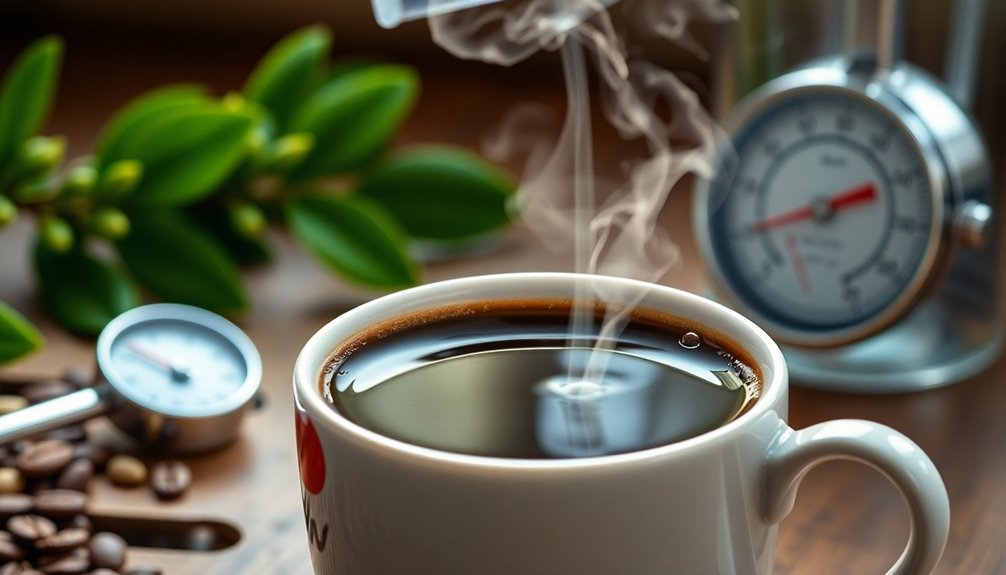
Water temperature significantly impacts how well your coffee extracts flavors and caffeine from the beans. When brewing, aim for a temperature between 195°F and 205°F. Hotter water extracts oils, acids, and caffeine quickly, but it can lead to over-extraction, resulting in a bitter taste. If you're using lighter roasts, consider brewing at slightly higher temperatures to speed up extraction. On the other hand, darker roasts benefit from lower temperatures to avoid bitterness. Using the right temperature balances extraction, ensuring you get the desired flavors without extremes. Additionally, the caffeine content of your coffee can be influenced by the brewing method and water temperature, so adjusting these factors can help optimize your cup. Invest in a thermometer or an electric kettle with adjustable settings to maintain optimal brewing conditions. Your cup's flavor and caffeine content will thank you for it!
Serving Size Considerations
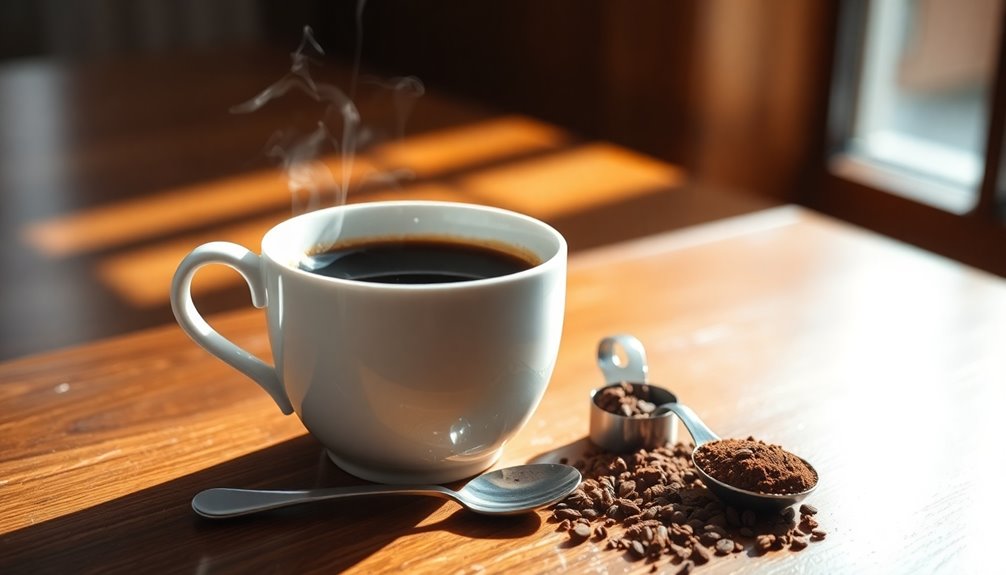
Brewing your coffee at the right temperature can enhance flavor, but serving size plays a significant role in caffeine content as well.
A 10 oz cup of medium roast coffee typically contains between 125 and 200 mg of caffeine when brewed using drip methods. If you opt for percolated coffee, that amount jumps to around 250 mg. Custom-printed paper cups are available in various sizes, including 10 oz, which can cater to diverse customer needs. Additionally, caffeine can also impact weight loss efforts when consumed in moderation.
Comparatively, an 8 oz cup has between 95 and 200 mg, while a 12 oz cup can contain 150 to 300 mg. Larger servings, like a 16 oz cup, may reach up to 330 mg.
Effects of Roast Level
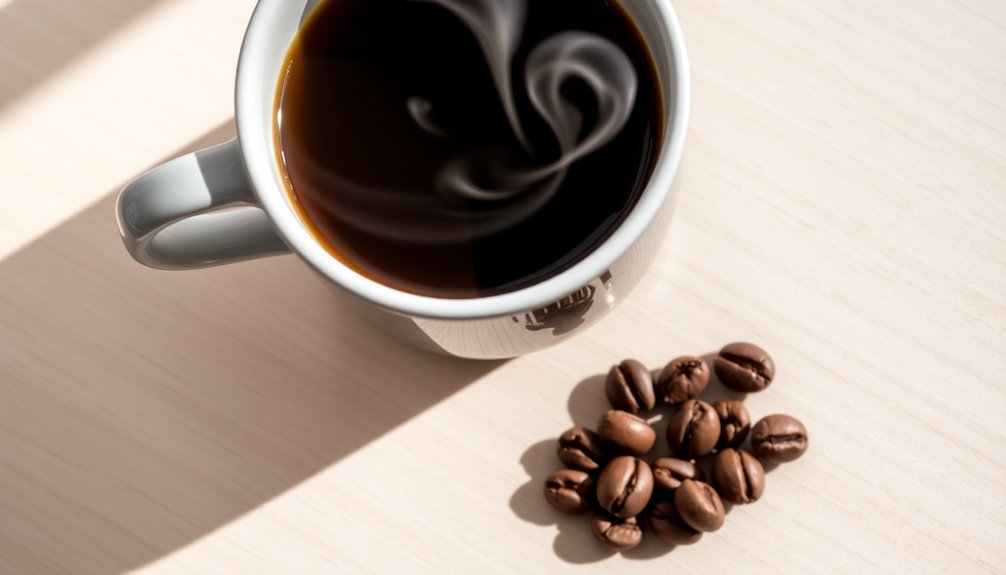
While many coffee drinkers might assume that the roast level significantly affects caffeine content, the reality is quite different.
Caffeine levels remain stable during roasting, with only about 5.4% lost under extreme conditions. When comparing light, medium, and dark roasts, the differences in caffeine content are negligible. The choice of roast primarily hinges on the characteristics of the green beans, not on caffeine levels. However, if you measure by weight, dark roasts may contain slightly more caffeine due to requiring more beans to match the same weight as light roasts. Ultimately, the type of bean you choose—Arabica or Robusta—has a far greater impact on caffeine content than the roast level itself. Robusta beans contain approximately twice the caffeine of Arabica beans, highlighting the importance of bean variety in determining caffeine levels.
Frequently Asked Questions
How Does Caffeine Tolerance Affect Individual Sensitivity to Coffee?
Caffeine tolerance significantly affects your sensitivity to coffee. If you metabolize caffeine slowly, you may experience heightened effects, like jitters or anxiety, especially as you age.
Your genetic makeup plays a big role, determining how efficiently your liver processes caffeine. Daily variations in diet, medications, and overall health can also influence your sensitivity.
To manage it, consider reducing your intake or switching to decaf to avoid uncomfortable symptoms.
Can Decaffeinated Coffee Still Contain Caffeine?
Yes, decaffeinated coffee can still contain caffeine.
While it's reduced by at least 97% according to FDA regulations, it isn't completely caffeine-free. An 8 oz cup of decaf usually has about 3 to 15.8 mg of caffeine.
If you're sensitive to caffeine, even these small amounts might affect you.
What Are the Health Effects of High Caffeine Intake?
High caffeine intake can lead to various health issues.
You might experience increased blood pressure or irregular heartbeats, especially if you're sensitive. Anxiety disorders could worsen, causing jitteriness and sleep problems.
It might also affect your digestive system, leading to gastrointestinal discomfort. If you're pregnant, excessive caffeine can pose risks like miscarriages.
Be mindful of your consumption; staying below 600 mg daily can help mitigate these potential effects on your health.
How Does Caffeine Content Compare in Tea Versus Coffee?
When you compare caffeine content in tea and coffee, you'll find coffee typically packs a stronger punch.
A standard 8 oz cup of brewed coffee contains about 80-100 mg of caffeine, while brewed tea varies—black tea has 14-70 mg, green tea up to 45 mg, and white tea up to 60 mg. If you’re looking for a more specific answer, it’s important to note that the caffeine content in chai tea can also vary depending on the type of tea used and the brewing method. However, on average, a standard 8 oz cup of chai tea contains about 40-60 mg of caffeine. So, if you’re wondering how much caffeine in chai tea, the answer is approximately 40-60 mg.
Are There Any Natural Ways to Reduce Caffeine Absorption?
To reduce caffeine absorption naturally, you can start by eating fiber-rich foods like whole grains and vegetables, which slow absorption.
Staying hydrated is crucial, so drink plenty of water.
Consider moderating your overall caffeine intake and choosing smaller coffee sizes.
Physical activity, even short walks, helps burn off excess caffeine.
You might also try low-caffeine alternatives or supplements like L-theanine to alleviate jitters and anxiety from caffeine consumption.
Conclusion
In conclusion, the caffeine content in a 10 oz cup of coffee can vary based on several factors like brewing method, bean type, and roast level. Generally, you can expect between 95 to 200 mg of caffeine. To get the most out of your coffee experience, pay attention to these elements and adjust your brewing technique accordingly. So next time you brew a cup, you'll know exactly what to expect in terms of that delightful caffeine kick!

